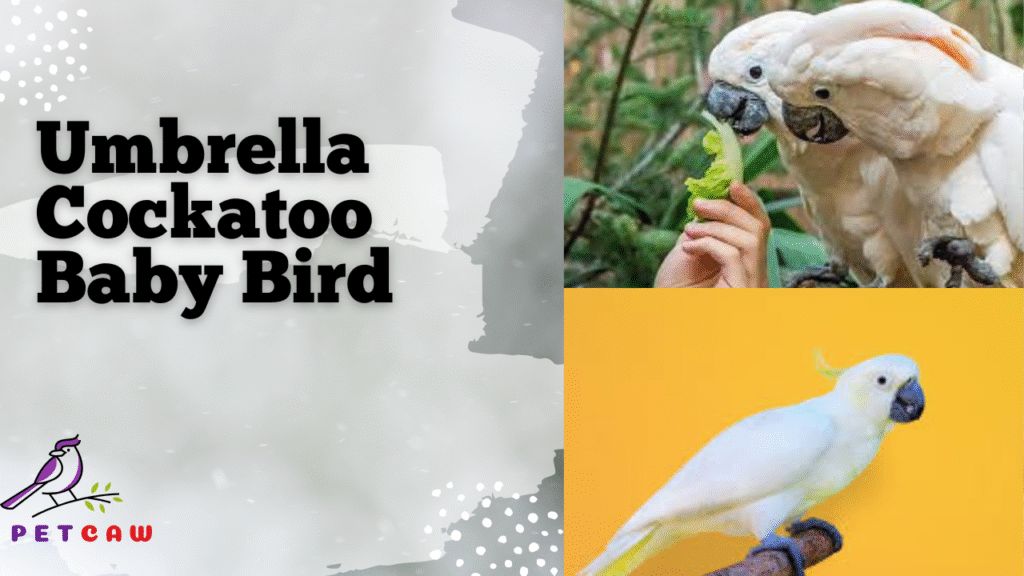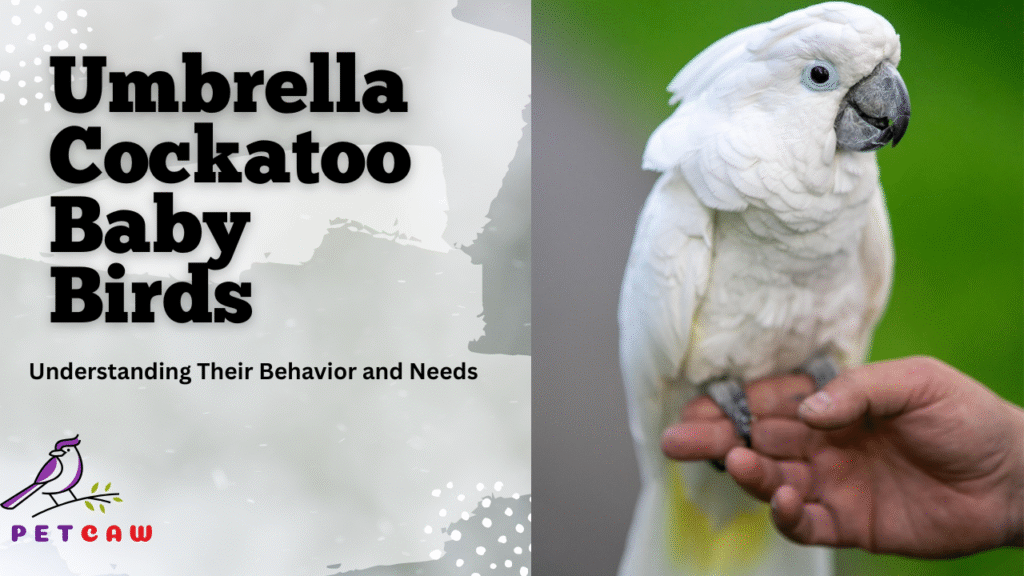Have you ever seen a baby Umbrella Cockatoo? With their fluffy white feathers and curious eyes, they’re some of the most adorable baby birds you’ll ever meet. But before you consider bringing one home, it’s important to understand their unique behaviors and needs. This guide will walk you through everything in simple language, perfect even for a sixth-grader to follow.
What is an Umbrella Cockatoo?
The Umbrella Cockatoo is a beautiful white parrot with a fan-shaped crest that looks like an umbrella—hence the name! These birds are smart, friendly, and love attention. But baby Umbrella Cockatoos are like toddlers—they need care, patience, and lots of love.
Why People Love Baby Umbrella Cockatoos
Many bird lovers fall in love with baby Umbrella Cockatoos because they are:
Super affectionate
Playful and fun
Quick learners
Great at forming bonds with humans
A friend of mine, Sarah, once shared how her baby Umbrella Cockatoo, Coco, would snuggle under her chin every night before bed. Coco even tried to mimic her laugh after just two weeks!
Behavior of Baby Umbrella Cockatoos
Baby Umbrella Cockatoos are full of energy and curiosity. Here’s what you can expect:
Vocalizing: They start by making soft chirps and coos. As they grow, they get louder. Be prepared!
Cuddly nature: These birds love being close to their humans. If they feel ignored, they might scream or act out.
Mimicking sounds: Even as babies, they try to copy household noises or your voice.
Chewing: Like human babies teething, they chew everything. Safe bird toys are a must!
How to Care for a Baby Umbrella Cockatoo
Caring for a baby parrot isn’t hard, but it does take effort. Here’s a step-by-step guide:
Step 1: Safe and Cozy Home
Use a proper bird cage that is spacious and has horizontal bars.
Line the bottom with paper for easy cleaning.
Add perches and toys to keep your bird happy.
Step 2: Feeding Time
Babies usually need to be hand-fed using a syringe with special formula.
As they grow, introduce pellets, fruits, and vegetables.
Step 3: Daily Social Time
Spend at least 1–2 hours each day playing and talking with your bird.
They need attention to grow emotionally healthy.
Step 4: Regular Vet Visits
Visit an avian vet to check on their health and growth.
Common Challenges and How to Solve Them
Even though Umbrella Cockatoo babies are amazing, you might face a few bumps along the way:
Screaming: If your bird screams, it might be bored or lonely. Spend more time with them.
Feather plucking: This could mean stress or illness. Check with a vet.
Biting: They bite when scared or overstimulated. Give them space and stay calm.

Tips to Make Your Baby Bird Happy
Rotate toys often to keep things fun.
Talk and sing to them daily.
Give treats like apple slices (no seeds!) for positive reinforcement.
Play gentle music when they are alone—it keeps them calm.
Are You Ready for a Baby Umbrella Cockatoo?
Owning a baby Umbrella Cockatoo is like raising a small child. They need your time, love, and care. But the joy they bring is beyond words. From cuddles to conversations, these birds are true companions.
So, if you’re ready to welcome a soft, chirpy bundle of joy into your life, go ahead and bring home a baby Umbrella Cockatoo. Just make sure you have the right bird supplies and a whole lot of love to give.
With the right care, your baby bird will grow into a happy, healthy, and affectionate adult—one that will keep you smiling for years to come.
Quick Reminder: Always buy your baby bird from a trusted and ethical breeder or adoption center. This ensures your feathered friend is healthy and well-treated.
Ready to start your bird parenting journey? Explore our hand-picked selection of bird care products and get everything you need in one place!

Pingback: Top 5 Reasons Parrots Talk: The Enchanting Science Clearly Expressed